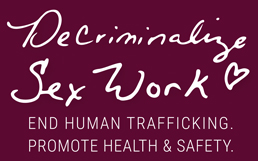The troublesome legacy of the Nordic model of prostitution
Where the Nordic model of governing prostitution has been implemented, including Norway, Sweden, and Canada, violence and exploitation in the sex trade continue. Instead of looking at the data that shows that decriminalization is the only model of governing sex work that decreases exploitation and increases public health and safety, proponents of the Nordic model of prostitution impose their ideological framework on sex workers and their clients in an attempt to “end demand” in the sex trade. Applying an overly simplistic economic principle related to supply and demand as opposed to taking into account the many nuanced factors that cause individuals to buy and sell sex is just the beginning of the Nordic model failure.
Why the Nordic model doesn’t work
Ample and unequivocal data show that where sex work is governed by the criminal justice system, as with the Nordic model, sex workers remain at risk. Some proponents of the Nordic model, also known as the Entrapment model, think they are helping sex workers by only criminalizing the purchase of sex. Meanwhile, this actually puts sex workers in more danger, as they remain at the mercy of their clients who must make decisions about how to evade arrest.
Sex workers are clear on why the Nordic model doesn’t work. They have less bargaining power and in many cases, this model actually gives more power to the buyer and pushes sex work underground resulting in increased marginalization for sex workers.
Nordic model criticism
After the Nordic model was implemented, Norwegian sex workers reported harassment by police and many faced eviction by their landlords in an organized program called “Operation Homeless.” Landlords were encouraged by police to discriminate against and evict tenants who engaged in prostitution. They often did this rapidly, and without warning, leading to significant international Nordic model criticism.
The Oslo police department provided instructions and incentives to landlords who evicted tenants suspected of engaging in sex work. Police officers in Oslo told Amnesty International that they were instructed to prioritize this practice as a means of curtailing sex work.
What is the Nordic model?
While there is no specific, legal definition for the “Nordic model” of prostitution, the term refers to any framework for governing prostitution that has these three main features:
- 1. It makes buying sex a punishable crime.
- 2. It removes laws that criminalize the direct act of selling sex.
- 3. It criminalizes the organization and/or promotion of selling sex through various means which still cause sex workers great harm.
In other words, clients and buyers are breaking the law by engaging in prostitution while sex workers are not, though this is an oversimplified definition. When asked “What is the Nordic model?” some may refer to it as “partial criminalization” or “partial decriminalization.” Nothing can be “partial” when one part of a transaction is criminalized which makes the recent attempt to rebrand the Nordic model as the Equality Model that much more confusing. Both the client and sex worker are impacted by criminalization because clients do not want to be arrested and where this model is implemented sex workers may not be arrested for prostitution but once they are “outed” by law enforcement eager to police the sex trade, their lives can be ruined by the state and others in numerous and severe ways.
Nordic model human trafficking
Proponents of the Nordic model conflate human trafficking and consensual adult sex work, insisting that all sex work is exploitative and inherently dangerous, which is patently false. This view perpetuates the dangerous notion that sex workers cannot make voluntary choices about what they do with their bodies which allows many to view them as commodities. Insisting that consensual adult sex workers cannot possess bodily autonomy or rights and that they are always being exploited puts them and those being trafficked in the commercial sex industry in danger.
Under the Nordic model, human trafficking cannot be properly addressed or prosecuted. As the sex trade is still pushed underground, victims are harder to identify and do not know where to turn for assistance. Wherever prohibition is implemented, illicit markers flourish. By viewing all sex work as inherently exploitative, consensual adult sex workers are denied their basic human rights. Proponents of the Nordic model insist that it will eliminate trafficking while evidence shows that it allows exploitation and trafficking to proliferate, a tragic irony of this moralist approach to governing sex work.





